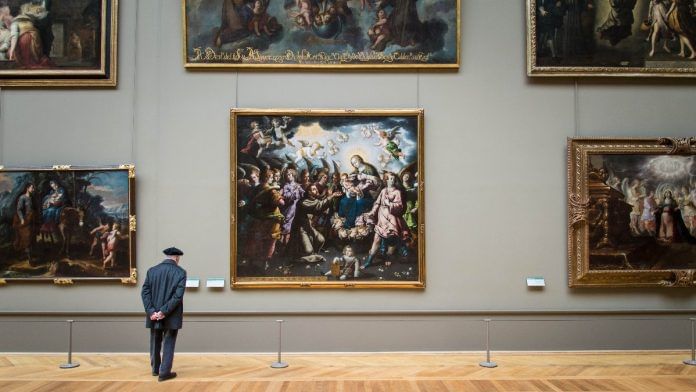New Delhi: Two men alleged to have ‘helped’ in the Louvre heist have been arrested. But the bigger question in everyone’s minds is this. Are museums safer now?
The spectacle of the Louvre heist — a breathless, canonical moment for the art world — appears to have come to an end. While the investigation will continue to unfold and global media might set its eyes elsewhere, what transpired at the Louvre — the audaciousness of the robbery and the ease with which it was carried out — exposes critical gulfs in museum security systems. If anything, a theft of such stature should inspire a moment of reckoning for the art ecosystem across the world. Those working at the Louvre have called it inevitable.
The museum was functioning with old security infrastructure and was seeing “persistent delays” in the updating of security equipment, including cameras. Security experts see the nature of the heist as part of a broader pattern: “low-brow heists” which focus on smaller, easily resellable commodities. Tim Carpenter, former director of the FBI’s art crimes unit, has forewarned of “copy-cat crimes.”
“I think what this heist should do is wake everybody up to the fact that they’re all at risk,” he told security website ASIS.
While the Louvre is currently the centrepiece, the absorber of global shock and outrage, it is far from the only powerhouse museum operating through a mirage of invincibility. Complacency, if the number of thefts and security breaches is anything to go by, is a malaise that has made itself at home in the hallowed halls of the world’s leading museums.
The British Museum is undergoing a major security overhaul after a spate of crises. Two years ago, it came to the authorities’ notice that an astounding 2,000 items had been stolen. Such was the scale of the crisis that they even appealed to the public, and the museum announced greater accountability—they would be digitising their entire collection. But then came another setback. Earlier this year, the museum’s IT infrastructure came under attack from a contractor, who managed to shut down even the institute’s ticketing system.
“Our priority is now threefold: first, to recover the stolen items; second, to find out what, if anything, could have been done to stop this; and third, to do whatever it takes, with investment in security and collection records, to make sure this doesn’t happen again. This incident only reinforces the case for the reimagination of the Museum we have embarked upon,” George Osbone, chair of the British Museum, said in a press statement.
In a dramatic coincidence, gold and silver coins were stolen from another museum in France on the same day as the Louvre heist. The loot was supposedly selected “with great precision and expertise”. Just last month, the Natural History Museum in France was heisted.
The industry is ringing alarm bells, instructing museum authorities to be more vigilant. There is also a discussion that such thefts could continue.
A report in Museums Journal speculates on the underlying reason behind what’s befalling the world’s untouchable institutions. Spurred by the economic downturn, there has been an increase in “thefts from heritage properties”, and “the trend of smash and grab-style attacks is likely to continue, particularly with the economic downturn we’re experiencing.”
Also read: The chemistry behind carbide guns and why they are blinding children in Madhya Pradesh
Outdated security system
Meanwhile, the Louvre has acknowledged its musty security system. Museum director Laurence Des Cars not only admitted that there was only a single exterior camera near the thieves’ entry point, but also that it was facing away from them.
“We didn’t spot the thieves’ arrival early enough,” Des Cars has said, adding that she “fully recognises that we have a weakness in the perimeter protection of the Louvre.”
It only took seven minutes to bring the world’s largest museum to its knees. The thieves appear to have taken tactical advantage of the gaping holes in security. They set up a truck on the periphery of the museum, leading into the Apollo Gallery. Trucks and their ladder-like appendages are common sights on the streets of Paris, and so, it went by unnoticed, and the thieves sped off on motorbikes on an otherwise ordinary day.
In June, the Louvre was forced to close its doors after a protest by staff members. Gallery attendants, security staff and ticketing agents staged a walk-out, punching up against what they phrased as “inadequate staffing.”
“Security concerns, Louvre staff alleged, had resulted in ‘untenable’ working conditions,” read a report in Art News.
This was months after French President Emmanuel Macron announced the lofty Louvre Renaissance, a 675 million euro refashioning of the museum, paving the way for 12 million people to visit the Louvre. Currently, it receives about 8.7 million visitors each year.
(Edited by Saptak Datta)






